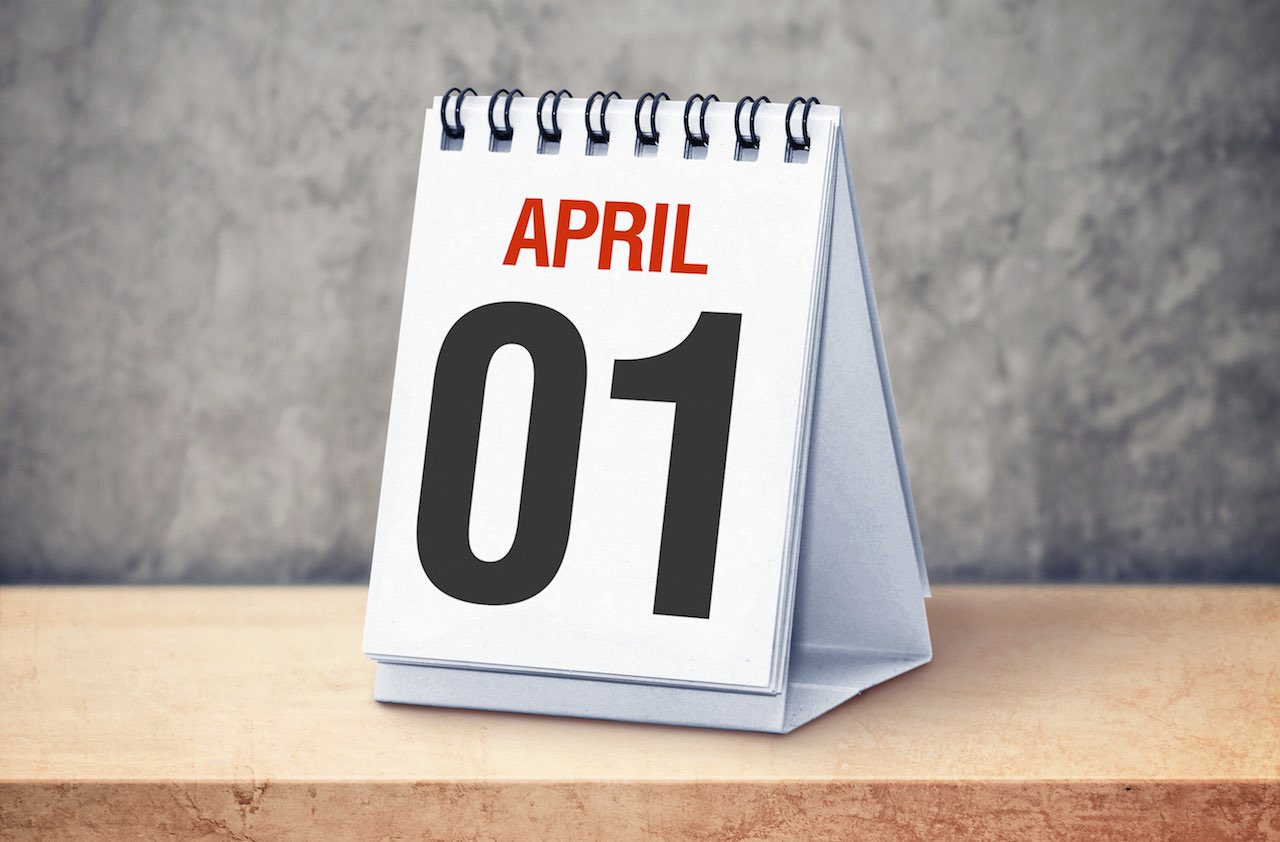RMD Start Date and Your Heirs
Whether an IRA owner dies before or after the "required beginning date" determines beneficiaries' options for taking distributions.


April 1 is commonly known as April Fool's Day. But for IRA owners, it's more seriously known as the "required beginning date." You and your beneficiaries could face an unexpected tax tab if you don't understand the nuances of this important milestone.
The required beginning date is the deadline for a traditional IRA owner to take the first required minimum distribution. The date is April 1 following the year you turn age 70 1/2 -- so it matters whether your 70th birthday is in the first or second half of the year.
If you turn 70 in May 2016, for example, you'll hit age 70 1/2 in November 2016 -- and your required beginning date will be April 1, 2017. But if you turn 70 in September 2016, you won't turn 70 1/2 until 2017 -- and you must take your first distribution by April 1, 2018. "The most confusing year is the first year," says Jeffrey Levine, chief retirement strategist at Ed Slott and Co.
From just $107.88 $24.99 for Kiplinger Personal Finance
Become a smarter, better informed investor. Subscribe from just $107.88 $24.99, plus get up to 4 Special Issues

Sign up for Kiplinger’s Free Newsletters
Profit and prosper with the best of expert advice on investing, taxes, retirement, personal finance and more - straight to your e-mail.
Profit and prosper with the best of expert advice - straight to your e-mail.
If you wait until April 1, you will need to take two distributions in the same year. The person with the May birthday above must take his 2016 distribution, and by December 31, 2017, he must take his 2017 distribution. After the first year, required minimum distributions must be taken by December 31.
If you miss your RMD, you're subject to a penalty of 50% of the shortfall. But you can ask the IRS to waive the penalty by filing Form 5329. "I have never come across a case that the IRS has said no to waiving the penalty," says Denise Appleby, of Appleby Retirement Consulting, in Grayson, Ga.
The Impact on Heirs
Your required beginning date also affects your heirs. Their options for taking distributions depend on whether you die before or after your beginning date.
Nonspousal beneficiaries. If you die before you start taking RMDs, your child or other nonspouse beneficiary can take annual distributions over his own life expectancy, starting the year after your death. The beneficiary transfers the account to an inherited IRA. Or the beneficiary can choose to clean out the account within five years of your death -- missing the opportunity for a lifetime of tax-deferred growth.
What if a beneficiary decides to go the five-year route but changes her mind after a year or two? She may be better off paying a missed-RMD penalty and then getting back on track, Appleby says. The beneficiary can ask the IRS for a penalty waiver.
Most IRA agreements allow beneficiaries to use the life expectancy rule. But some small banks may still require the five-year rule; a beneficiary who wants to take distributions over their lifetimes can transfer the inherited IRA to a firm that allows that.
If you die after you began RMDs, the beneficiary faces a different choice: He can calculate distributions based on his own life expectancy if he's younger than you, or on your life expectancy if he's older than you. The longer life expectancy results in smaller RMDs.
Spousal beneficiaries. No matter when you die, a surviving spouse can choose to roll an inherited IRA into her own name at any time. If she chooses to remain a beneficiary, the rules differ. If you die before your beginning date, your spouse can keep the account in your name and hold off taking RMDs until the year you would have turned 70 1/2; at that point, she could start taking distributions over her lifetime. Or she could roll the account into her own name and take RMDs when she hits her own beginning date.
If you die after starting your RMDs and she wants to keep the account in your name, a spouse who is younger can use her own life expectancy to stretch distributions. A spouse who is older can use your remaining life expectancy to take smaller RMDs.
The rules are different for Roth IRAs. The original owners are not required to take distributions, but beneficiaries must take RMDs. (A surviving spouse who rolls an inherited Roth into her own Roth doesn't have to take RMDs.) No matter how old an original owner is when she dies, a beneficiary has two options: take distributions based on his own life expectancy or clean out the account within five years.
Profit and prosper with the best of Kiplinger's advice on investing, taxes, retirement, personal finance and much more. Delivered daily. Enter your email in the box and click Sign Me Up.

-
 Retirees in These 7 States Could Pay Less Property Taxes Next Year
Retirees in These 7 States Could Pay Less Property Taxes Next YearState Taxes Retirement property tax bills could be up to 65% cheaper for some older adults in 2026. Do you qualify?
-
 Estate Tax Quiz: Can You Pass the Test on the 40% Federal Rate?
Estate Tax Quiz: Can You Pass the Test on the 40% Federal Rate?Quiz How well do you know the new 2026 IRS rules for wealth transfer and the specific tax brackets that affect your heirs? Let's find out!
-
 'The 'Mamdani Effect' in New York: Can the City Afford a Millionaire Tax?
'The 'Mamdani Effect' in New York: Can the City Afford a Millionaire Tax?State Tax Will higher income taxes drive the wealthy to flee New York in 2026?
-
 457 Plan Contribution Limits for 2026
457 Plan Contribution Limits for 2026Retirement plans There are higher 457 plan contribution limits in 2026. That's good news for state and local government employees.
-
 Medicare Basics: 12 Things You Need to Know
Medicare Basics: 12 Things You Need to KnowMedicare There's Medicare Part A, Part B, Part D, Medigap plans, Medicare Advantage plans and so on. We sort out the confusion about signing up for Medicare — and much more.
-
 The Seven Worst Assets to Leave Your Kids or Grandkids
The Seven Worst Assets to Leave Your Kids or Grandkidsinheritance Leaving these assets to your loved ones may be more trouble than it’s worth. Here's how to avoid adding to their grief after you're gone.
-
 SEP IRA Contribution Limits for 2026
SEP IRA Contribution Limits for 2026SEP IRA A good option for small business owners, SEP IRAs allow individual annual contributions of as much as $70,000 in 2025, and up to $72,000 in 2026.
-
 Roth IRA Contribution Limits for 2026
Roth IRA Contribution Limits for 2026Roth IRAs Roth IRAs allow you to save for retirement with after-tax dollars while you're working, and then withdraw those contributions and earnings tax-free when you retire. Here's a look at 2026 limits and income-based phaseouts.
-
 SIMPLE IRA Contribution Limits for 2026
SIMPLE IRA Contribution Limits for 2026simple IRA For 2026, the SIMPLE IRA contribution limit rises to $17,000, with a $4,000 catch-up for those 50 and over, totaling $21,000.
-
 457 Contribution Limits for 2024
457 Contribution Limits for 2024retirement plans State and local government workers can contribute more to their 457 plans in 2024 than in 2023.
-
 Roth 401(k) Contribution Limits for 2026
Roth 401(k) Contribution Limits for 2026retirement plans The Roth 401(k) contribution limit for 2026 has increased, and workers who are 50 and older can save even more.